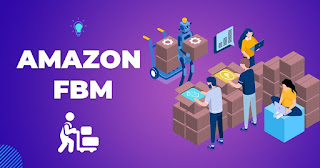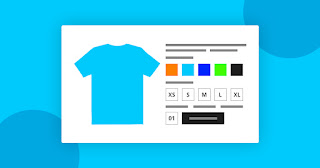Amazon FBM: How It Works and the Benefits for Sellers
Amazon's Fulfillment by Merchant (FBM) is an option for fulfillment that allows you to deliver items to customers who purchase from you via Amazon.
You can manage the fulfillment yourself or outsource it to a third-party logistics firm (3PL) that specializes in eCommerce order fulfillment.
It's simple, you control your orders and make sure that you are able to deliver. It is essential to keep your orders in order and keep the delivery on time to avoid problems with your customers as well as with Amazon itself.
Important to note that you'll handle returns too and this can add to the requirements for customer service.
As of the spring of 2022 Amazon was still on a waiting list in its Seller Fulfilled Prime program, which allows sellers to fulfill their own orders, and receives the Prime badge for their products when they fulfilled the requirements for delivery.
Although the SFP waitlist is still open there's no way that FBM sellers to earn this badge.
How It Works for Your Business
If you choose to use Amazon FBM, your business uses Amazon as an alternative sales channel to fulfill orders. It's still managing your inventory storage, picking, packing, and shipping.
Your company will connect its tech stack with Amazon to allow you to have orders automatically delivered and customers will receive orders information via the information on their Amazon accounts.
Amazon requires a few things to be met in order to establish an account and get your FBM established:
You'll need to establish your own Amazon Seller Central account first.
Use SellerApp Extension, to identify lucrative products that you can offer on Amazon.
Provide complete information about the product and implement a search-focused strategy to get them noticed.
Integrate your software for fulfillment and order management to Amazon to process orders and provide customer information.
Update your account details to verify handling and shipping times, and also send instructions for return.
Make sure that you send orders to customers within the time frame the time that Amazon estimates.
Offer customer tracking numbers.
Keep positive reviews from customers for products, and reduce complaints about delivery and accuracy of orders.
When you've got your FBM in place and is good for the customers you serve, Amazon will give you additional support options. One of the most useful is the access the Premium Shipping.
Can FMB Still Let You Outsource Fulfillment?
When you select Amazon FBM you are able to be in charge of the fulfillment of your orders. You can manage it however you want as long as Amazon's customers continue to receive the goods and information needed by Amazon. This means that you are able to outsource your business to any reliable 3PL or warehouse supplier.
Outsourcing can assist eCommerce businesses that want to comply with Amazon's demands and get their products to their customers fast. A 3PL might have multiple warehouses in order to make sure that customers get two-day delivery, and they usually negotiate lower prices with carriers due to their large volume of shipping each day.
If your company requires assistance with an order or inventory management such as demand forecasting or knowing when to utilize the dimensional weight calculation to get the most value outsourcing to an eCommerce-oriented 3PL might be able to aid you in protecting your investment and expanding yours.
Check out this video to learn how to calculate your Amazon FBA profits and compare Amazon FBA vs FBM in the easiest way!
When Does FBM Make Sense for a Business?
In Amazon's fulfillment, the fluctuation has led several companies to think about FBM instead of fulfillment by Amazon. While you might lose your Prime badge, you could be able to deliver goods more quickly to customers, and also better safeguard your company.
Let's examine a few of the benefits and drawbacks of making use of FBM as opposed to Fulfilled By Amazon.
Advantages of Using FBM
You can have more control over the fulfillment process and other costs. FBM lets you run your own operations or try various 3PLs to discover the most suitable solution for your needs and budget.
FBM is less expensive than the Fulfilled By Amazon account, however, FBM has access to an extensive customer list. Find out more information about FBM costs below.
Manage your brand's image with your boxes, and much more. FBM doesn't need you to make use of Amazon's packaging. This means that customers will connect the entire purchase and the fulfillment process with your name which gives you more opportunities to make an impression.
Beware of the other Fulfilled By Amazon requirements, like strict labeling and shipping warehouse regulations that can cause problems for companies that are new.
Fulfillment is more stable since you're not subject to the mercy of Amazon's ever-changing FBA specifications. A lot of companies are considering FBM specifically due to changes that have prevented the sale of orders or restocking until 2021.
In the event that you choose to outsource your fulfillment, you might also enjoy more trust with the fulfillment company. Amazon is known for how difficult it is to talk to a representative to solve a problem. Smaller 3PLs typically offer customers an individual sales or support representative.
Certain companies have stated that they have the ability to introduce new products more quickly using FBM when compared to Fulfilled By Amazon. The ability to speed up the time to market puts you in the best position to improve the overall margins.
What Are Amazon FBM's Fees?
While moving to FBM from a Fulfilled by Amazon account will reduce the number of expenses however, there are some basic Amazon FBM charges to take into consideration. In this article, we'll examine the three major costs and an additional cost that isn't part of the Amazon pipeline.
Amazon sellers require an account for selling, which comes that costs $0.99 per sold item and $39.99 monthly. For sellers selling greater than 40 items, you'll need the Professional monthly fee typically as it permits you to conduct promotions, get the top spots, and also integrate into the API.
Referral fees occur with every sale you make because you're selling through an Amazon website. Amazon has fees that differ according to product type and ranges between 6% and 45 percent. Certain items, such as big appliances have a more complicated fee structure, where different values require different calculations.
If you opt for the per-item selling option then you'll need to include $0.99 for every item you sell. This cost is waived when you opt for the monthly subscription plan however, it's a good idea to be aware of it and keep the information on your spreadsheet in case you're trying to decide when to change plans in the future.
In addition, you'll also have the typical charges that are associated with fulfillment. This could include shipping, storage, and management of inventory as well as costs for packaging, kitting, and return management. In general, businesses face these costs no matter the method they use to fulfill orders.



Comments
Post a Comment